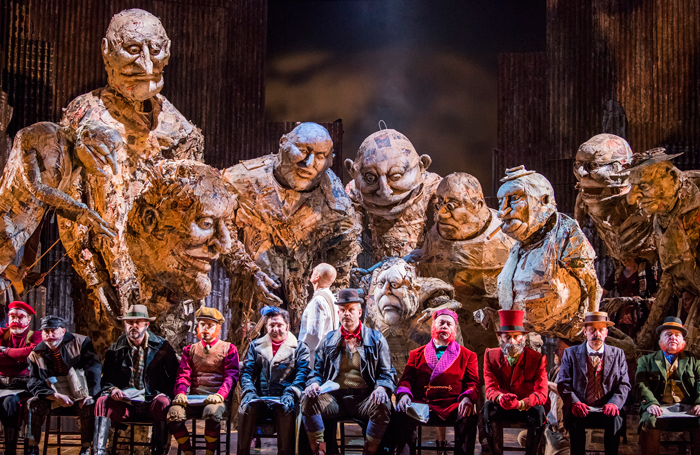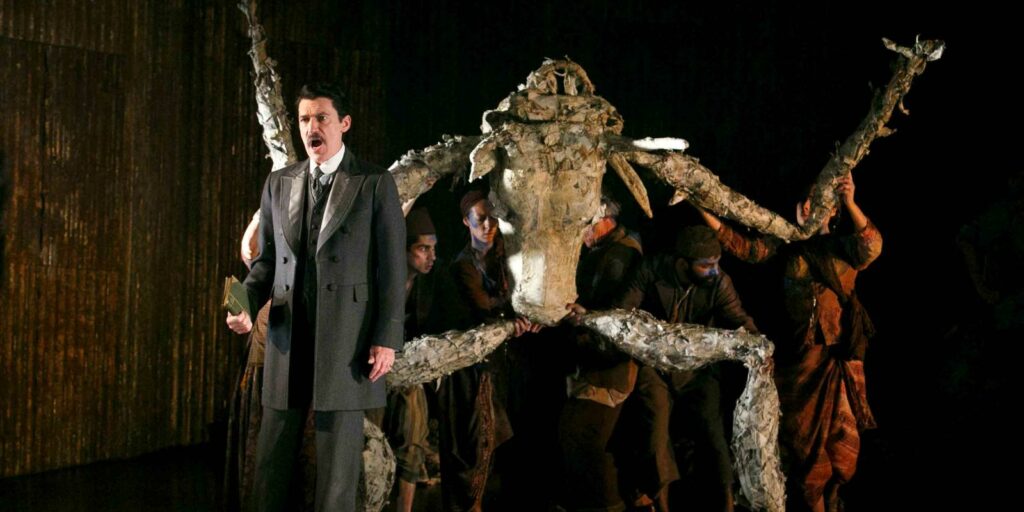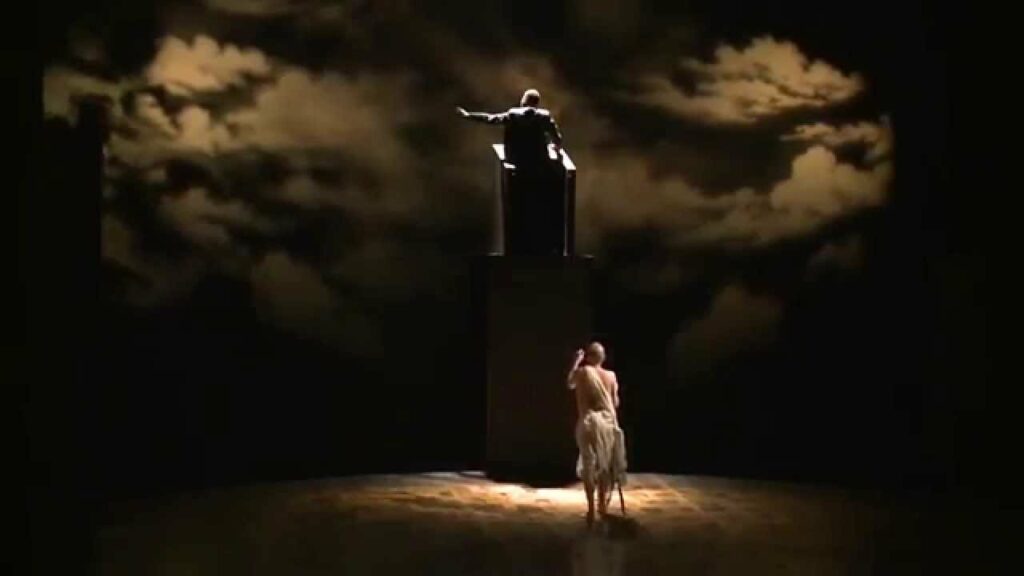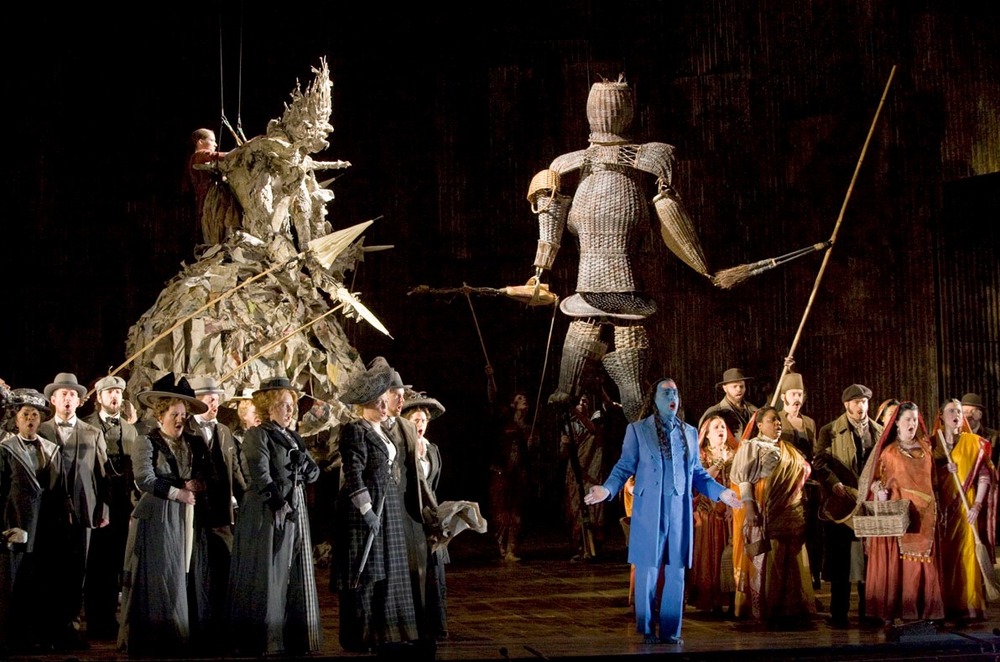
Whenever Pawn comes to London, theatre, dance, music and art are a big part of the undertaking. Life under COVID makes this a somewhat more fraught exercise, but vaxxed and masked, we jump right in. The first show of the visit is the Philip Glass opera, Satyagraha, presented here by English National Opera (ENO), and produced in cooperation with New York’s Metropolitan Opera. This production is a collaboration not just with the Met, but also with Improbable, a British company who are, in their own words, “Pioneering improvisers, theatre makers and conversation facilitators.”
Pawn and X first encountered Improbable’s fine work in 2012’s The Devil and Mr Punch, a collaboration with Julian Crouch and Basil Twist. That was a small performance in the Pit, the Barbican’s smallest venue. This event couldn’t be further from that; a humongous performance in London’s largest (>2300 seats) theatre, the Coliseum. While not a frequent attendee of opera, Pawn does appreciate the bombasity, sheer size, spectacle, and audacity of well done opera. Aside from some Pucini, back home in Milwaukee, the last big show I’d seen was Benvenuto Cellini, an ENO production conceived & directed by Terry Gilliam, at a performance in Amsterdam. Or William Kentrige’s take on Lulu, here in London.
So how was Satyagraha? Sung in sanskrit, sans surtitles, one was left only to imagine precise action. While there was a synopsis provided, in the form of a one page handout, it is somewhat non-traditional. But this didn’t really matter. The score is propulsive where the action demands it, and contemplative where it doesn’t. The staging, as one expects of these things, was truly spectacular. Improbable’s impact was most surely felt in the many instances of puppetry, as shown in the scene above, or here:

The story follows the full arc of Gandhi’s life and works, from his youthful engagement with Tolstoy (The Tolstoy Farm) all the way through to Martin Luther King, Jr., as shown in this scene from King (Act III):

It is that final act with King which yields perhaps the most moving tableau of the piece, and it is deeply emotional. It is in this emotion, however, where Glass’s score risks leaving us wanting. The swirling, repetitive, patterns which characterize Glass’s compositions risk becoming tedious over the span of three hours and ten minutes (including intervals). But it is in these final scenes, with King, that these same repetitions bring force to Gandhi’s imploring, almost chant-like final aria.

I came to this show primarily on the basis of Improbable’s involvement, and was not disappointed in any way. The show was beautiful and stunning. The performances strong, the staging expansive. This is no small feat.
